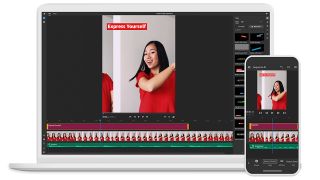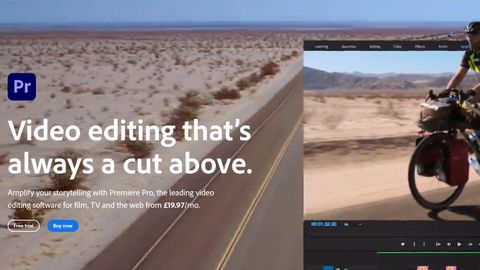Adobe Premiere Pro CC is the continually evolving piece of video editing software that comes as part of Adobe Creative Cloud. It’s the sum of decades of design, feedback and refinement. Adobe does a stellar job of listening to its users and providing the tools and features they want. The result is a non-linear editor that has the power, versatility and depth to create any video project you put to it, whether it be a full-length movie, music video, vlog post or instructional demonstration. This professional video editor is one of the few names in the business that earns the title “industry standard.”
The first step when creating any video project with Premiere Pro is capturing or importing your video footage, audio and other elements into the software. Importing media that's already on your computer is straightforward, and capturing files from digital media, such as your camera, is similarly simple. One of this program’s biggest advantages is its comprehensive camera support. You can import footage and other media from nearly any device. As such, you don't have to worry about proprietary formats while you work with footage from disparate camera types.
Premiere Pro CC caters to the nuanced demands of pro and veteran video editors. For example, you may take hours applying effects to a specific clip in the timeline, but the source footage is much longer, and other clips are used elsewhere in the timeline. Instead of having to make those specific alterations to each clip in the timeline, Premiere Pro lets you apply effects and alterations to footage while it is still in the media bin. This means you do the work once, then whenever you use a clip from that footage in the timeline, the effects are already in place. This may seem like small thing, but it's a huge timesaver and an example of how Adobe is focused on making the editing process easier and faster.

One of the most basic audio tasks in any professional video editing application is synchronizing separately recorded audio tracks with their video counterparts. This is usually what you have to do when you shoot on a DSLR camera. With other video editing apps, you have a separate audio device that captures the sound, and you have to line these files up by hand by eyeballing the waveforms from each. This can be time-consuming. One of Premiere Pro’s most convenient features synchronizes audio and video from different sources, creating a new unified media clip in your bin that has the audio and video aligned. This is extremely helpful to capture video on one device and audio on another. This might seem trivial, but it can save you a lot of time when you’re organizing your elements and picking which of them to use in your project.
Premiere Pro has modules that walk new users through the video editing process step by step. This is a great way to learn the ins and outs of the interface and get the most out of the tools this program has to offer.
One example of how Premiere Pro improves timeline editing is what Adobe calls JKL trimming. JKL refers to the keyboard shortcuts that allow you to scrub through the elements on your timeline. JKL trimming marries these shortcuts with the trimming tool. This allows you to scrub and trim simultaneously, performing precise cuts to footage as you watch it, rather than making a cut, watching it and going back to find the spot where you need to trim the clip. This is a massive timesaver and allows you to refine a sequence with more speed and precision than is possible with other applications.
This program now lets you work on multiple projects at the same time. Previously, you were forced to save and close the project you were working on before you could open a different one. Now, you can seamlessly switch between projects at any time.
Virtual reality is a new frontier for video. Premiere Pro has tools that allow you to edit VR media, including program pan and zoom controls that let you see exactly what your audience would. It’s very impressive technology.
Premiere has very handy task-oriented workspaces, which allow you to shut out everything else in the program and focus on the specific job before you. So, whether you’re coloring, organizing your elements or applying special effects, you’ll have all the tools you need and nothing you don’t.
One of the biggest advantages of Premiere Pro is that you get new updates to the software as they are released. This generally happens in the spring and fall of each year. New features and enhancements are automatically added without the need to buy or upgrade to new versions every year. The most recent update includes intelligent audio cleanup and grading which makes reducing background noise and other sound imperfections easier. Another useful tool is selective color grading, which allows you to adjust and match color in your projects more precisely.
Premiere Pro CC is the continuation of Adobe's gradual enhancements to its professional video editing software. As such, it's no surprise that it is incredibly useful and nuanced. It’s among the best professional video editing programs because it takes all the tools you need and presents them in a way that is convenient, intuitive and innovative.


